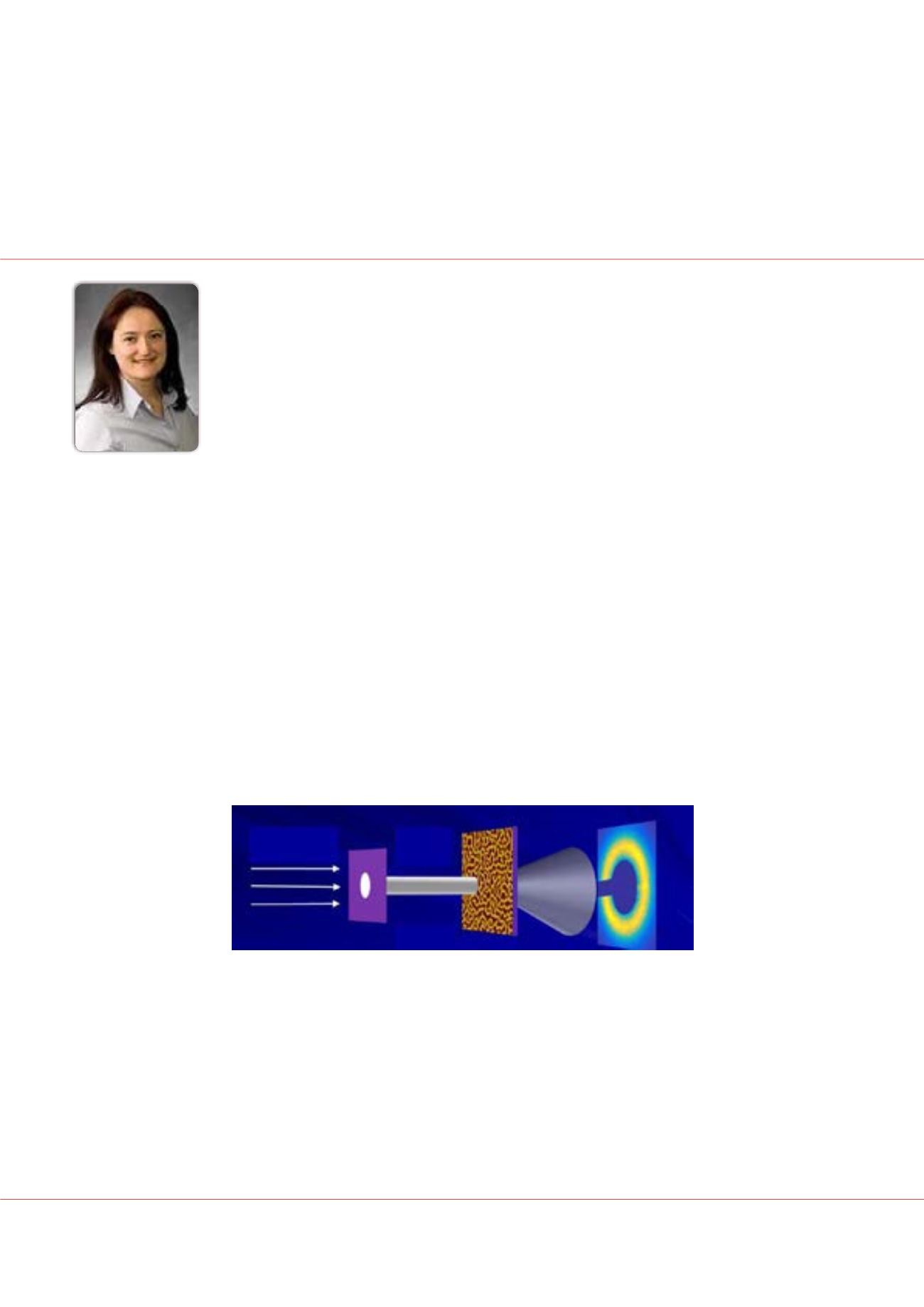

Volume 6
Research & Reviews: Journal of Material Sciences
ISSN: 2321-6212
Magnetic Materials 2018
October 22-23, 2018
Page 58
conference
series
.com
October 22-23, 2018 | Rome, Italy
3
rd
International Conference on
Magnetism and Magnetic Materials
Karine Chesnel, Res. Rev. J Mat. Sci. 2018, Volume 6
DOI: 10.4172/2321-6212-C6-028
Shaping nanoscale magnetic domain memory in exchange-coupled [Co/Pd]IrMn thin films by field
cooling
M
agnetic nanostructures, such as magnetic domains in perpendicular thin ferromagnetic layers, draw an increasing attention
for their potential applications in nanotechnologies. Magnetic domain memory (MDM), i.e. the ability for the domain
pattern to retrieve its exact same spatial configuration through field cycling, can be particularly useful in magnetic recording
technologies. Here, author will show how x-ray synchrotron tools can uniquely probe the behavior of these magnetic systems at
the nanoscale. More particularly, author will review the technique of coherent x-ray magnetic scattering (CXRMS) and how it can
be used to measure MDM in thin ferromagnetic films, as illustrated in Figure 1. Because illuminating a magnetic pattern with
coherent X-rays produces a speckle scattering pattern that is a unique fingerprint of the magnetic domain configuration, cross-
correlating such speckle patterns provides a way tomeasureMDM. Author will present results on [Co/Pd]IrMn exchange bias thin
films that exhibit strong MDM (above 95%) when cooled down below their blocking temperature. By mapping the correlation as
function of magnetic field, author will show how the behavior of MDMdepends onmagnetic history and cooling field. We will see
that, when zero-field cooled, the MDM reaches its maximum value in the coercive region of the magnetization cycle. We will also
see that MDM is fairly robust through field cycling and through heating, all the way up to the blocking temperature. Finally, author
will show howMDM can be fully controlled by adjusting the magnitude of the cooling field: if the film is cooled down under no or
moderate field, MDM stays strong and robust throughout the entire magnetization loop; if the film is cooled with under a strong,
near saturating field, MDM is essentially lost.
Figure 1:
Sketch of the coherent x -ray scattering experiment carried on out ferromagnetic thin films exhibiting domains.
Recent Publications
1. KChesnel et al. (2008)Magneticmemory in ferromagnetic thin films via exchange coupling Physical ReviewB 78:132409.
2. K Chesnel et al. (2011) Oscillating spatial dependence of domain memory in ferromagnetic films mapped via x-ray
speckle correlation. Physical Review B 83:054436.
3. K Chesnel et al. (2013) Field mapping and temperature dependence of magnetic domain memory induced by exchange
couplings. New Journal of Physics 15:023016.
4. KChesnel et al. (2016) Shaping nanoscale magnetic domainmemory in exchange- coupled ferromagnets by field cooling.
Nature Communications 7:11648.
Karine Chesnel
Brigham Young University, USA
















